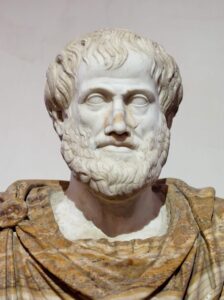
Unsurprisingly, the development of monetary theory derives from the origins and early functions of various monies. So, put simply, money is as money does? The commodity theory of money is well-known today as it is used, often implicitly, in conventional, neo-classical economic theory. Money’s medium of exchange function is strongly emphasized, and the measure of relative value function is deployed (typically as “price” without consideration of its wider implications) in the classroom to explain it. So let us look more deeply into three key conceptualizations of money.

Commodity Theory of Money
The commodity theory focuses on money as being a medium of exchange, that is, money acts as a universal commodity that is exchangeable for all other commodities. Money’s role in an economy is explained in terms of its elimination of the inefficiencies of direct bartering, albeit with indirect bartering. All the other functions of money (the “moneyness” of money) are derived from its medium of exchange function. The ideas, the theoretical underpinnings, that inform modern commodity theory – from Locke, Newton, Petty, Cantillion, Hume – all trace back to Aristotle’s time-honoured, theory in which money is conceptualized as a “thing” which possesses value that allows it to act as a medium of exchange (we might imagine that Aristotle was precociously “modern” and marvellously ahead of his time, but as Fernandez-Armesto explains: Aristotle does not think like us, rather we “saturated in his influence” think like him).
Critically, we should note that the notion of money as being a measure of absolute value has been replaced by modern economic science, with the emphasis being firmly placed on relative value as produced through exchange (supply and demand) and the interplay of subjective preferences.

Labour Theory of Value
Historically, Karl Marx (1818-1883) provided one of the most important challenges to the commodity theory of money with his own labour theory of value. By theorizing the value of money as being equivalent to (or symbolic of) the labour expended, or embedded, in its production, Marx posited that the amount of labour power expended in the production of a commodity ultimately decided the value which the commodity possessed. So the purchasing power of a gold coin, for example, may be seen as an expression of the “socially necessary” labour required to produce it. In this sense, the labour theory of value emphasizes the tangible “store of value” function of money (as theorized in the first chapter of the first volume of “Das Kapital”). Similarly, other philosophers have proposed metaphysical conceptions of wealth, where money is seen as essentially representing energy (led by Frederick Soddy, a hundred years ago), and more recently, information or communications technology as in the Bitcoin “revolution” of today.
However intellectually attractive these “money as single-factor/agent” theories may be, money is notoriously complex, takes many different forms, and acquires many varied socio-economic functions. Owing to Marx’s unswerving focus on the socioeconomic meaning of labour, Boehm-Bawerk and the Austrian school of economists worked to demolish his arguments in the late nineteenth century by emphasizing the interaction of preferences, technology, and endowments through exchange (present-day, general equilibrium theory). Beyond arguing about the utility of the labour theory of value, however, we must also recognize that in many ways the failure to conceptualize the multifunctional nature of money in fact:
“…prevented Marx (and almost all his contemporaries) from recognizing… the production of abstract value in the form of credit-money, or the more radical position that all money is token credit”. (G. Ingham, The Nature of Money, (Cambridge UK: Polity, 2004), pp. 62-3. Please note, much of my understanding presented here has come from this wonderful exposition on money.)
Thus many generations of scholars informed by Marxist theories have failed to grasp the dynamics and power of financial capitalism, particularly in its most alarming, contemporary, twenty-first century, pandemic crisis guise.

Credit (or Claim) Theory of Money
Over the last century or so, the only other theory of money to gain acceptance among social scientists relates to the social construction of credits and debts. The credit theory of money or “claim theory” is derived from the notion that the moneyness of money consists as intangible claims or credits, not in its utility as tradeable objects or their symbols. Irrespective of any form it might take, money is a “claim” or “credit” that is constituted by social relations that exist independently of the production and exchange of commodities.
In contrast to orthodox economic theory and its casual acceptance of Aristotelian commodity theory, money is first and foremost an abstract measure of value that serves as a unit of account. Critically, money is not in any way “neutral” in nature or character, and, as such, money is not a universal commodity amenable to orthodox micro-economic theory. Rather, the creation and circulation of money is always the result of carefully constructed social and political arrangements. Seen in this light, money also represents a claim or credit against the issuer; be it a merchant, a monarch, a state, a central bank, or whatever the case may be. Money has to be “issued” and something can only be issued as money if it is capable of cancelling debt that has been incurred by the issuer.
The origin of the power of money thus lies in the promise – and moreover, the belief, and trust – held between the issuer and the users of the money. In effect then, a transactional triangle has been formed between the issuer, the buyer, and the seller based on the heavenly grace of human trust.
Towards a new understanding
In conclusion, the above article has introduced the three major theoretical concepts of money; briefly conceptualizing what money does, what money is, and what money might be in an uncertain age of global pandemics and emerging socioeconomic crises. Now more than ever, the present spread of Covid-19 forces us to fundamentally reconsider how we conceive the use and importance of money, not only across whole economies and societies, but also in our own lives.
Let’s continue the conversation!
Please look out for the next article in this Numismatist’s Guide to Money series, The Origins of Money, where Simon Bytheway examines archeological discoveries and the earliest historical records to find out what they tell us about the competing commodity and claim theories, and the wider socio-economic meaning of money.
Author’s note: The thoughts presented here are based on my earlier “Conceptualizing Money: from Commodity Monies to Cryptocurrencies” (2017) article, with thanks to the editors and publishers. I hope to present a full bibliography of sources and additional readings at the conclusion of the Numismatist’s Guide to Money series.
If you missed the previous part of this series, here you can read Part 1: What Does Money Do?
For more information on the author, read Simon Bytheway’s Who’s who entry.




